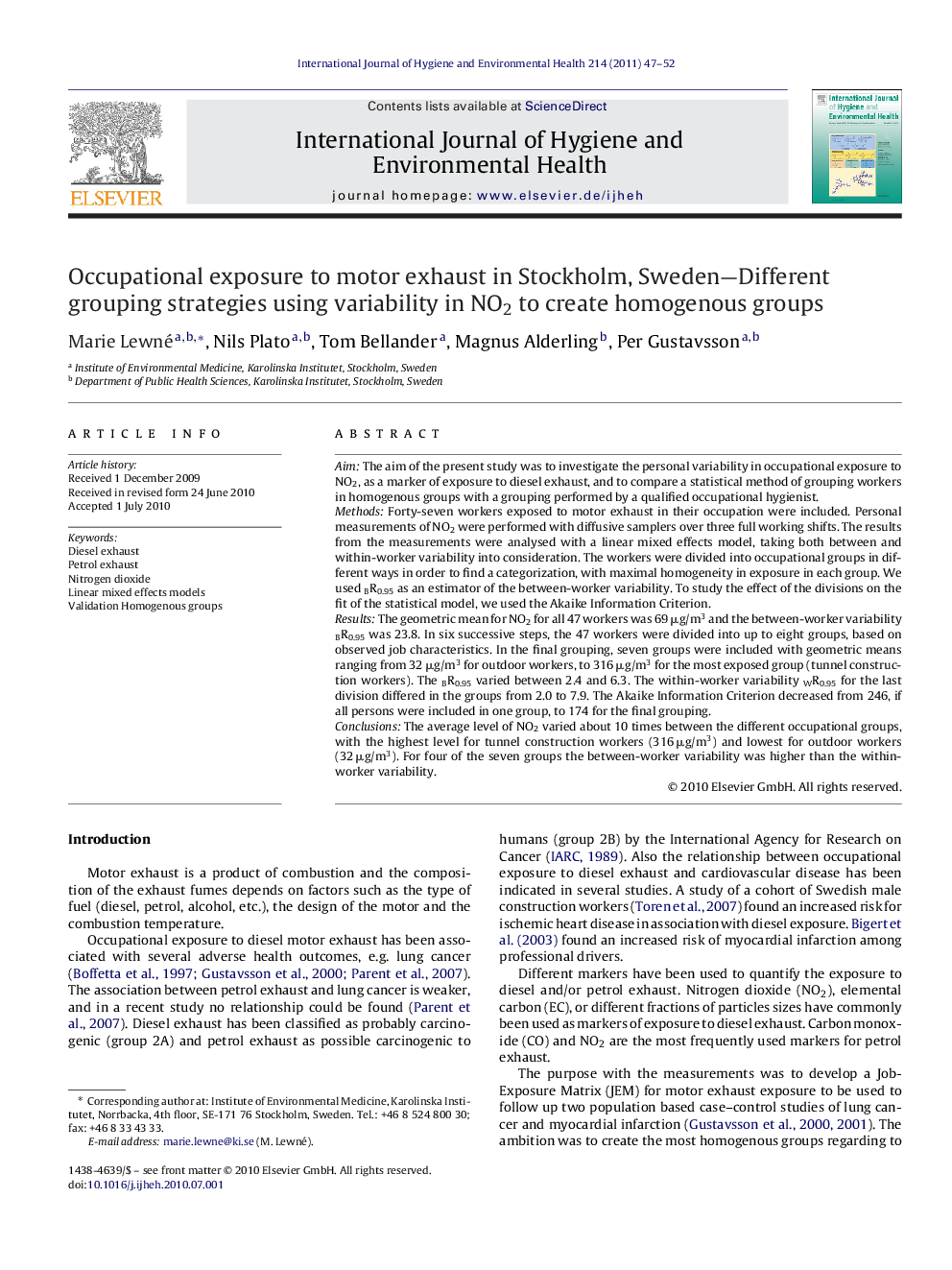| Article ID | Journal | Published Year | Pages | File Type |
|---|---|---|---|---|
| 2589050 | International Journal of Hygiene and Environmental Health | 2011 | 6 Pages |
AimThe aim of the present study was to investigate the personal variability in occupational exposure to NO2, as a marker of exposure to diesel exhaust, and to compare a statistical method of grouping workers in homogenous groups with a grouping performed by a qualified occupational hygienist.MethodsForty-seven workers exposed to motor exhaust in their occupation were included. Personal measurements of NO2 were performed with diffusive samplers over three full working shifts. The results from the measurements were analysed with a linear mixed effects model, taking both between and within-worker variability into consideration. The workers were divided into occupational groups in different ways in order to find a categorization, with maximal homogeneity in exposure in each group. We used BR0.95 as an estimator of the between-worker variability. To study the effect of the divisions on the fit of the statistical model, we used the Akaike Information Criterion.ResultsThe geometric mean for NO2 for all 47 workers was 69 μg/m3 and the between-worker variability BR0.95 was 23.8. In six successive steps, the 47 workers were divided into up to eight groups, based on observed job characteristics. In the final grouping, seven groups were included with geometric means ranging from 32 μg/m3 for outdoor workers, to 316 μg/m3 for the most exposed group (tunnel construction workers). The BR0.95 varied between 2.4 and 6.3. The within-worker variability WR0.95 for the last division differed in the groups from 2.0 to 7.9. The Akaike Information Criterion decreased from 246, if all persons were included in one group, to 174 for the final grouping.ConclusionsThe average level of NO2 varied about 10 times between the different occupational groups, with the highest level for tunnel construction workers (316 μg/m3) and lowest for outdoor workers (32 μg/m3). For four of the seven groups the between-worker variability was higher than the within-worker variability.
